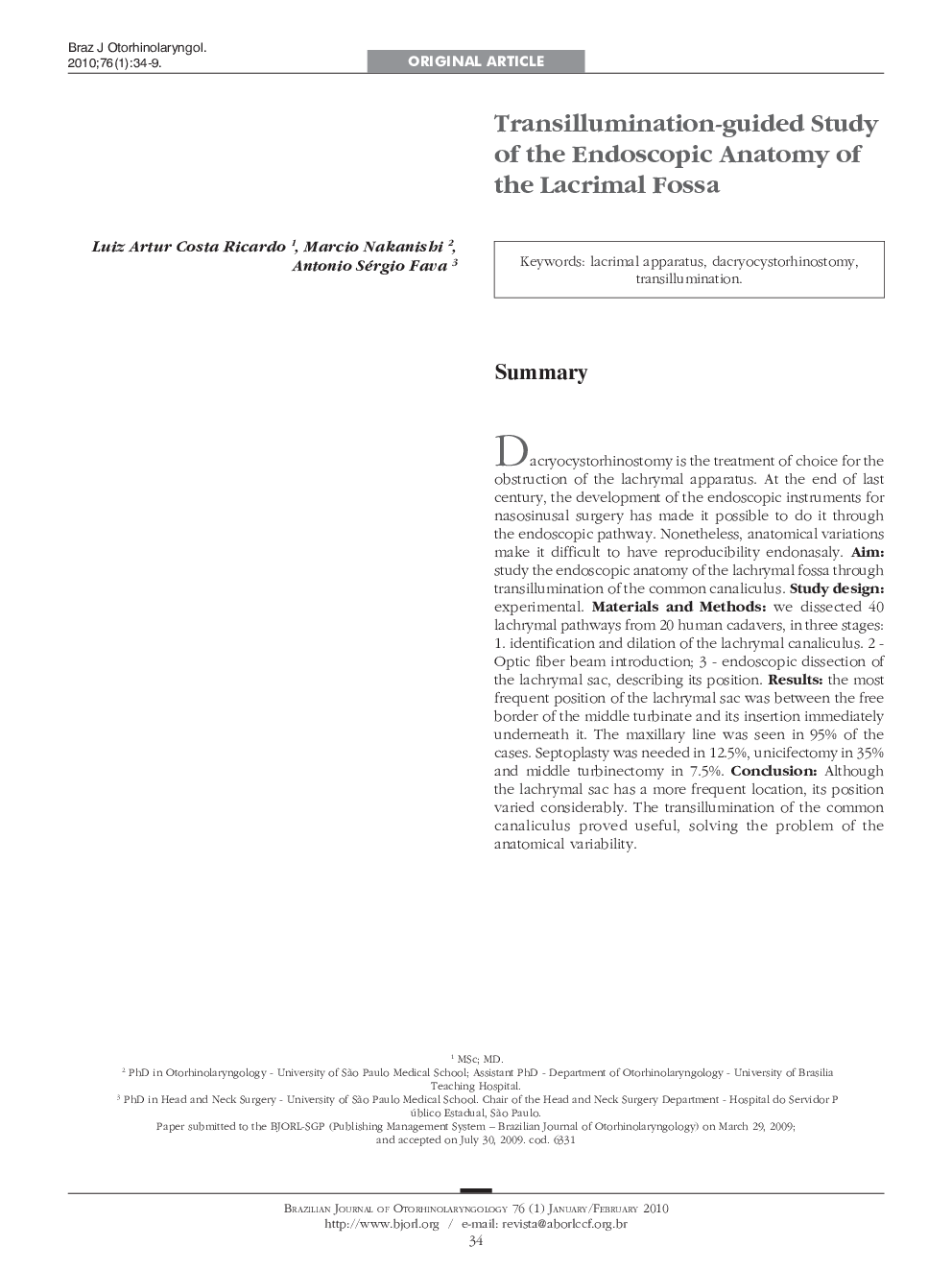| Article ID | Journal | Published Year | Pages | File Type |
|---|---|---|---|---|
| 4107617 | Brazilian Journal of Otorhinolaryngology | 2010 | 6 Pages |
SummaryDacryocystorhinostomy is the treatment of choice for the obstruction of the lachrymal apparatus. At the end of last century, the development of the endoscopic instruments for nasosinusal surgery has made it possible to do it through the endoscopic pathway. Nonetheless, anatomical variations make it difficult to have reproducibility endonasaly.Aimstudy the endoscopic anatomy of the lachrymal fossa through transillumination of the common canaliculus.Study designexperimental.Materials and Methodswe dissected 40 lachrymal pathways from 20 human cadavers, in three stages: 1. identification and dilation of the lachrymal canaliculus. 2 -Optic fiber beam introduction; 3 - endoscopic dissection of the lachrymal sac, describing its position.Resultsthe most frequent position of the lachrymal sac was between the free border of the middle turbinate and its insertion immediately underneath it. The maxillary line was seen in 95% of the cases. Septoplasty was needed in 12.5%, unicifectomy in 35% and middle turbinectomy in 7.5%.ConclusionAlthough the lachrymal sac has a more frequent location, its position varied considerably. The transillumination of the common canaliculus proved useful, solving the problem of the anatomical variability.
